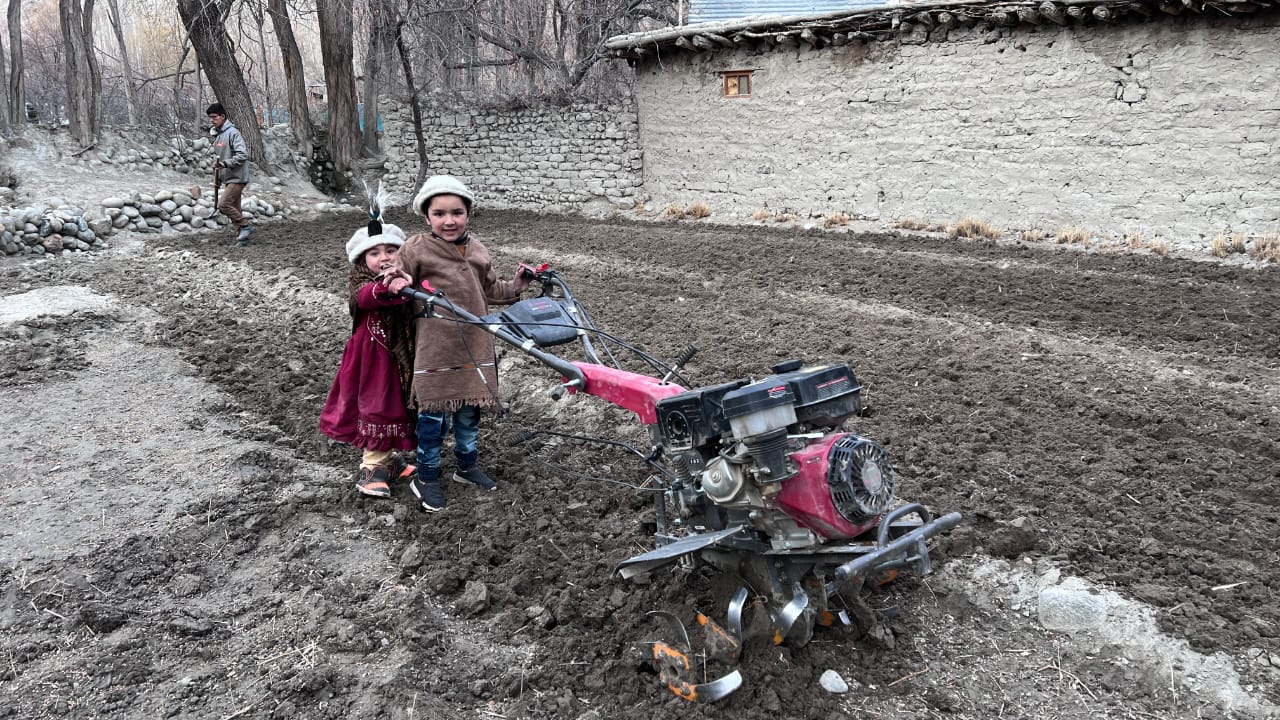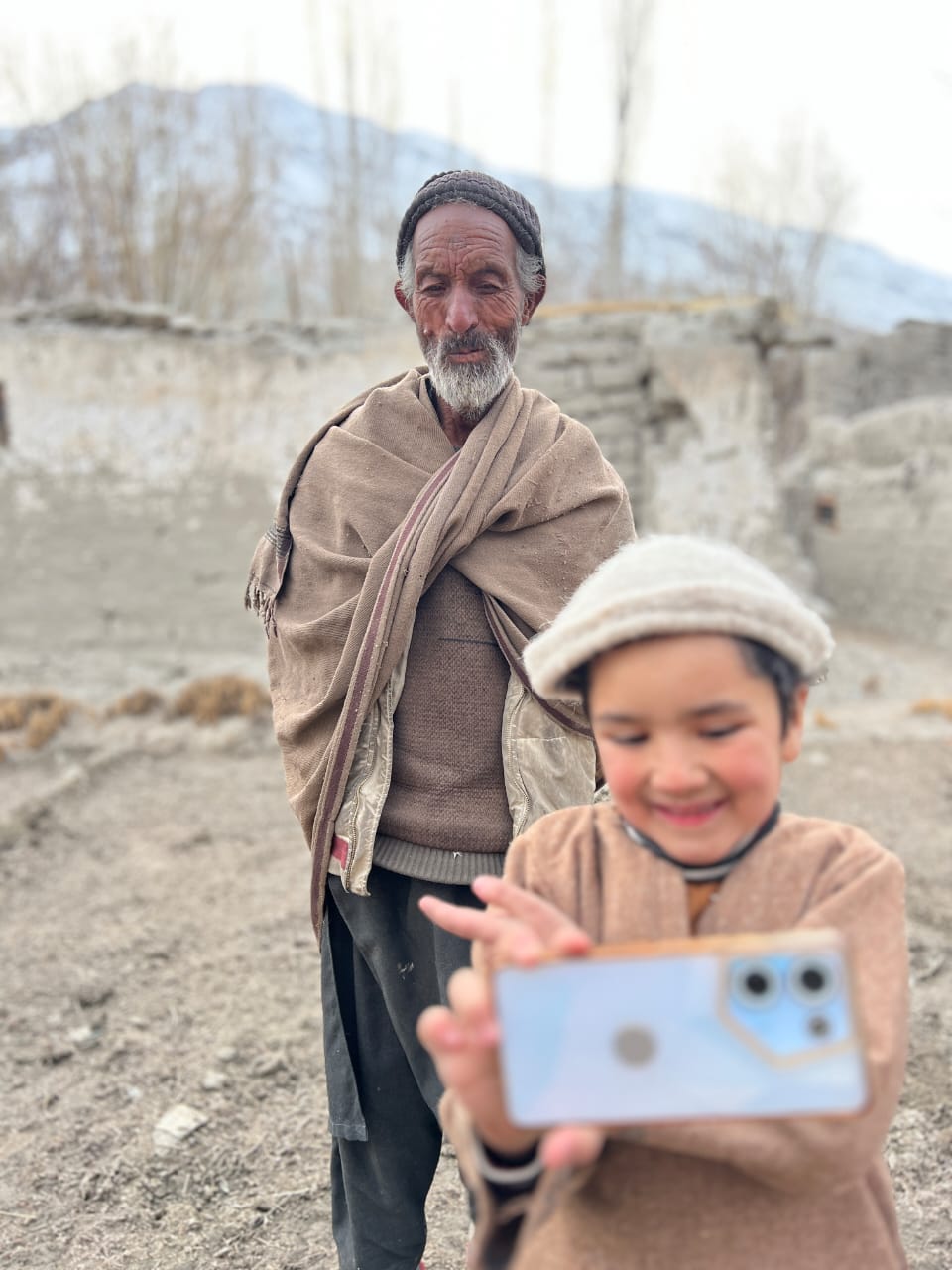Shiraz, a vlogger from northern Gilgit-Baltistan region, has seen his popularity snowball, becoming a celebrity
SKARDU, Pakistan
Pakistan’s northern scenic Gilgit-Baltistan region is world-famous for its snow-capped peaks, glistening lakes and glaciers, and plucky climbers.
Located on the confluence of the world’s three greatest mountain ranges, Gilgit-Baltistan has long been one of the favorite destinations of international climbers and trekkers, but the South Asian country is yet to exploit the region’s untapped tourism potential to its maximum advantage, mainly because of poor infrastructure and other facilities.
Yet the region has produced several internationally recognized mountaineers and high-altitude porters, including Samina Baig, the first Pakistani woman to scale the world’s tallest peak, Mount Everest, Nazir Sabir, the first Pakistani to scale the world’s second highest mountain, K2, the iconic high-altitude mountaineer Mohammad Ali Sadpara, and Sirbaz Khan, the first local climber to ascend 13 out of a total 14 peaks above 8,000 meters (26,247 feet) high.

A new addition to this long list is five-year-old Mohammad Shiraz, who has emerged as a new ambassador of its kind to promote the region’s indigenous beauty together with daily challenges the locals have to grapple with, including the internet.
Shiraz, a grade 1 student, recently joined YouTube as well as Facebook and Instagram, where he uploads his daily activities, showcasing the raw village life of the picturesque northern region, which borders China.
Within a month, his social media attempt has snowballed him into a celebrity, taking the internet by storm, with his fan following traversing borders and winning hearts in diaspora communities as well.
Hailing from Ghursay, a small village of 2,000 people, and perched on the foothills of Siachen, the world’s highest battlefield, Shiraz takes his viewers on a journey through swinging stony streets and Persian style houses, aside from introducing them to local festivals and celebrations.
“I want to show the beauty of my village and local life to the outside world. I just like it, “Shiraz told Anadolu when asked what propelled him to join YouTube.
His father, Mohammad Taqi, who is also a vlogger, is Shiraz’s inspiration.
“I did not teach or encourage him to do that because he is too young for that. It’s just his own decision and action. I just helped him a bit,“ Taqi said, while speaking to Anadolu.
Shiraz uploaded and released his first vlog last month and has already grabbed tens of thousands of subscribers and a YouTube Silver Play Button.
His broken Urdu and simple but playful storytelling style add further value to his vlogs, which go beyond the ubiquitous beauty of the region and serve as a window for viewers to peek into the daily life of the region, located in the eastern Karakoram mountain range in the Himalayas.
Huddled next to the borders of Pakistan, India and China, the region includes the world’s second-longest glaciers, stretching an impressive 76 kilometers (47 miles).
According to Pakistan army officials, before 1984, there was no military presence on the glaciers, but in April 1984 the Indian army initiated a secret operation and captured some top posts at the Siachen glaciers and approached the eastern Karakoram mountain range, which compelled Pakistan to move its troops into the strategic region of northern Kashmir.
Since then, both countries’ troops are stationed in Siachen, although a cease-fire came into effect in 2003.
South Asian neighbors and rivals Pakistan and India both claim sovereignty over the entire Siachen region.

Beyond beauty, mountains and treks
Gilgit-Baltistan lies at the confluence of the world’s greatest mountain ranges – Karakoram, Himalaya, Hindukush and Pamir – and is home to five peaks that tower over 8,000 meters, attracting thousands of foreign and local climbers and trekkers every year.
However, this has not impacted the region much in terms of development and prosperity.
Despite being home to iconic mountaineers, local climbers here have long been forced to work as porters for foreign mountaineers, mainly due to financial constraints and a lack of training.
“The outsiders know Gilgit-Baltistan for its beauty, mountains and treks. But there is another world beyond that, which is a mix of culture, hospitality, festivities and problems,” Taqi said.
“We want to tell the world about that as well. How does snowfall impact daily life? How do locals cope with stinging cold when there are no centrally-heated houses? And how our culture and languages are different and unique,” he maintained.
“And on top of that, how do we produce quality climbers and porters despite a lack of resources and training?“
Slow internet and poor tourism infrastructure
Formerly known as the Northern Area and once part of the erstwhile state of Jammu and Kashmir, the region remained a center of rivalries between Russian, British and Chinese empires and has been a cynosure of trekkers and adventure tourists over centuries.
Since the region became a gateway for the multi-billion dollar China-Pakistan Economic Corridor (CPEC) project, banks, investors and food chains are moving into the mountainous region.
However, a large chunk of the local population lives in poverty, in addition to poor infrastructure that discourages the tourists to visit far-flung but spectacular areas like Shiraz’s.

“Shiraz does not only want to highlight the beauty of his region but also invite the government’s attention to provide infrastructure to areas like ours, which have a lot to offer to nature lovers,” said Taqi.
Ghursay is one of the many areas of Gilgit-Baltistan which hardly see a tourist because of its poor road network and absence of hotels.
“If the government helps us to provide tourism-related facilities, these poverty-stricken areas can turn into other favorite tourist destinations,” he added.
Slow or no internet mainly because of frequent power outages, landslides and inclement weather is another issue that Shiraz highlights in his vlogs.
Only one cellular company provides 4G internet service across Gilgit-Baltistan, whereas a few other companies provide 2G service, which is available only for a few hours due to an electricity shortage.
The situation is relatively better in big cities like Gilgit and Skurdu, but in further and mountainous areas, the internet is practically available only for two hours a day, according to Mohammad Essa, a local journalist.
“On the one hand, there is already a limited outreach of cellular companies in the mountainous areas, while on the other, snowfall and rains often trigger landslides, which affect fiber optic and (cellular) towers, causing frequent suspensions of internet service,” Essa told Anadolu.
Supporting the contention, Taqi said the internet problem is taking a toll on students, online businessmen, freelancers and vloggers like Shiraz.
“A majority of people here have no proper source of income as our agriculture lands have already been destroyed by melting glaciers, leaving freelancing and other digital businesses among a few alternatives,” he added.
Pakistani meteorological reports have warned that Himalayan glaciers have been shrinking for the past 30 years, with losses accelerating to alarming levels in the past decade.
_________________
Published under International Cooperation with "Sindh Courier"
再一次问好